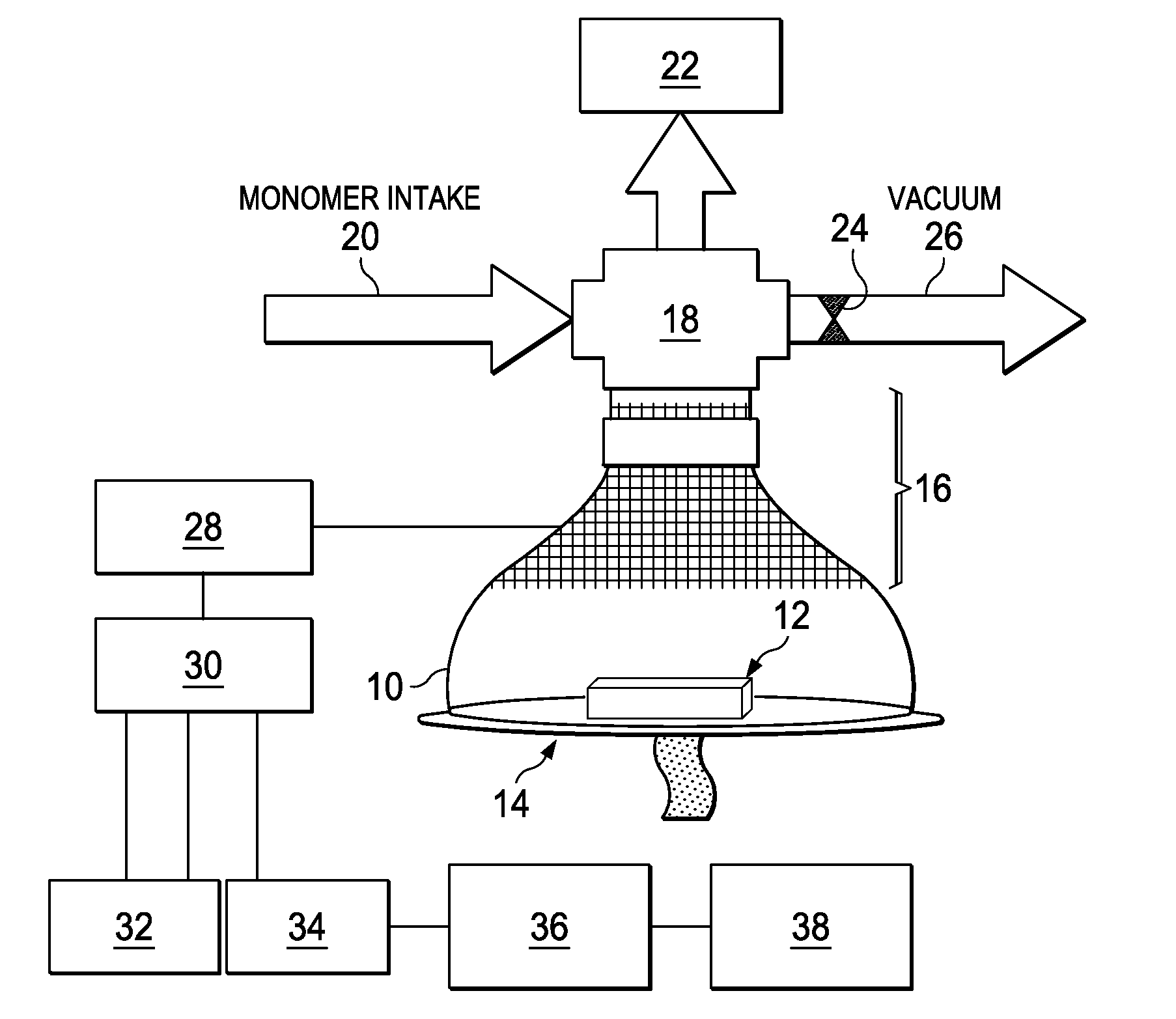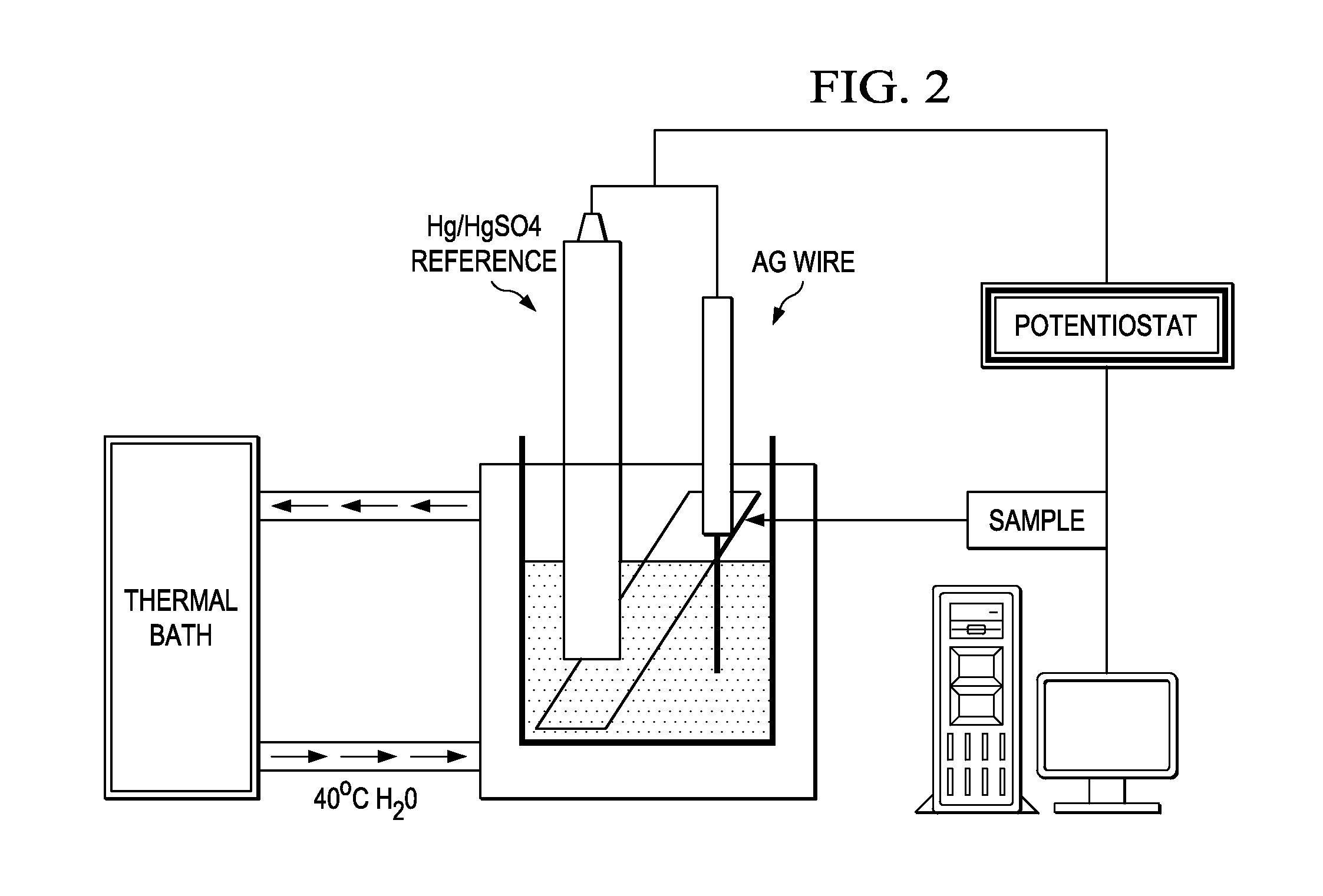Controlled Release Hydrogel Films
- Summary
- Abstract
- Description
- Claims
- Application Information
AI Technical Summary
Benefits of technology
Problems solved by technology
Method used
Image
Examples
example 1
[0049]In this example, the inherent controllability of the cross-link density of the hydrogel films, synthesized by the plasma polymerization approach, is shown to provide excellent control of the initial extent of silver ion absorption by the films. For this purpose, several hydrogel films were synthesized by plasma polymerization of the monomer 1-amino-2-propanol (1A2P). Prior studies have clearly revealed that it is possible to vary the extent of film cross-link densities by simple changes in plasma parameters employed during the synthetic processes. In the present case, synthesis included film depositions under pulsed plasma conditions of 10 ms on and 30 ms off, 10 ms on and 10 ms off, and under continuous—wave (CW) operation. These samples are identified here, and in subsequent examples, as samples A, B and C, respectively. In all three cases, the peak power input was 150 Watts. In one set of experiments, the plasma deposition times were adjusted to produce 500 nm thick films f...
example 2
[0050]In this example, the thickness of the hydrogel films, which can be precisely controlled during the plasma synthesis step, provide an additional convenient way to control the extent of silver loading, and thus the effective drug or agent dosage available for delivery. In these experiments, films were synthesized for varying times under a fixed set of plasma operating conditions. It has been previously amply demonstrated that film thickness, particularly those deposited under pulsed plasma conditions, are a linear function of the plasma deposition times. After synthesis, the films were immersed in silver nitrate solution as described in Example 1. Subsequently, the accumulated silver release from films of differing thickness, observed over identical extended release periods, were measured potentiometrically. During these extended release periods, the solutions were periodically replaced and the hydrogel films immersed in buffered solutions devoid of silver. In this way any poten...
example 3
[0051]Studies of the kinetics of the initial release rates of the silver ions from these hydrogels were made as functions of both film compositions and film thickness. In all cases, it was observed that there is an initial significant release of silver, a “burst effect”, which is then followed by a steady release over an extended period of time. For each sample tested, it was observed that the extended release rates exhibited zero order kinetics. A typical example of the kinetics of the silver release is shown in FIG. 9 for measurements made with a composition A sample of 500 nm thickness. The initial burst effect is noted and the release rate during the initial 100 minutes is clearly changing with time. However, after this initial burst period, the release rates become essentially constant with time, thus exhibiting zero order kinetics.
PUM
| Property | Measurement | Unit |
|---|---|---|
| Temperature | aaaaa | aaaaa |
| Temperature | aaaaa | aaaaa |
| Diameter | aaaaa | aaaaa |
Abstract
Description
Claims
Application Information
 Login to View More
Login to View More - R&D
- Intellectual Property
- Life Sciences
- Materials
- Tech Scout
- Unparalleled Data Quality
- Higher Quality Content
- 60% Fewer Hallucinations
Browse by: Latest US Patents, China's latest patents, Technical Efficacy Thesaurus, Application Domain, Technology Topic, Popular Technical Reports.
© 2025 PatSnap. All rights reserved.Legal|Privacy policy|Modern Slavery Act Transparency Statement|Sitemap|About US| Contact US: help@patsnap.com



